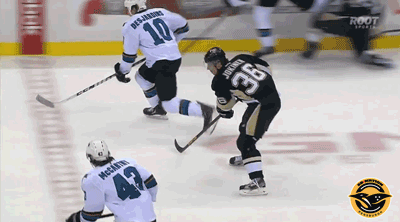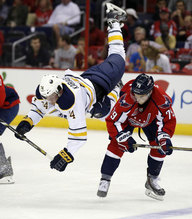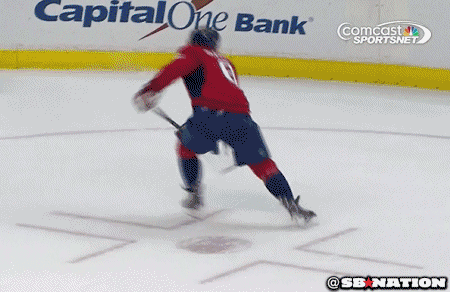Checking in hockey is a great example of collisions. According to
Physics: a strategic approach by Randall D. Knight, Newton's second
law, F=ma, applies directly to checking in hockey. The force a player
has when hitting another player directly relates to their speed and mass.
When some one is hit in this manner(see right) it creates an elastic
collision where the two masses are bouncing off of each other. Of
course, there are there are other variables that apply, such as a
players center of gravity, balance, and where a player gets hit.

http://giphy.com/gifs/hockey-hit-brooks-YGl4BWXTqyBFe

